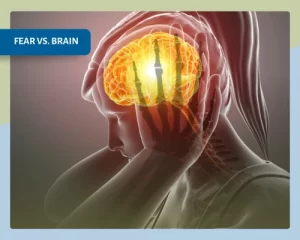Rheumatoid arthritis is a debilitating, chronic condition that can make everyday activities incredibly challenging.
If you’re one of the 1.5 million Americans living with RA, you know what I’m talking about.
But even if you don’t have RA, it’s important to learn about this little-known disease.
So today, let’s take a closer look at rheumatoid arthritis and its effects on the body.
What Is RA?
Rheumatoid arthritis is a chronic autoimmune disease that primarily affects joints (usually multiple joints at once).
It is a type of inflammatory arthritis and can cause pain, stiffness, swelling, and loss of function in the joints.
Though mainly considered to be a disease that affects the joints, rheumatoid arthritis can also affect other parts of the body.
Just like it attacks your joints, RA can affect other organs, including the skin, lungs, heart, and blood vessels.
Symptoms
The symptoms of rheumatoid arthritis can differ from person to person.
In some cases, the person may only experience a few symptoms, while in others, the person may experience more.
The most common symptoms of RA are inflammation, pain, and stiffness.
The inflammation often affects the joints in the body, which is what leads to pain and stiffness.
Other symptoms include fever, fatigue, weight loss, and a decrease in appetite.
Causes
Rheumatoid arthritis is an autoimmune disease.
The immune system normally protects the body against infection and illness.
However, in rheumatoid arthritis, your immune system attacks healthy tissue in your joints.
Science isn’t concrete on the exact cause of this disease, but it seems likely that there is a genetic component to it.
That doesn’t mean however that if your grandma had it, you will have it too.
Because genes aren’t really inherently causing a disease – They just make it more likely to have a certain reaction to something in the environment, that will unlock the disease.
Complications
Due to its nature, rheumatoid arthritis can make it far more likely for you to develop certain conditions, such as:
- Heart Problems
- Lung Disease
- Osteoporosis
- Lung Disease
- Lymphoma
Treatment Options
Unfortunately, there are no definite treatment options available for RA, but certain medication can help ease the symptoms.
The 3 most common ones are – NSAIDs, DMARDs and Biologic Agents.
NSAIDs
Nonsteroidal anti-inflammatory medications shortly, NSAIDs, can help with pain and inflammation by reducing them.
The typical ones, widely available, are Ibuprofen (Advil, Motrin IB, others), as well as naproxen sodium (Aleve).
There are stronger NSAIDs, but they are available with a prescription.
DMARDs
Disease-modifying antirheumatic drugs (DMARDs), may slow the progression of RA and preserve the joints from irreversible damage.
The most common DMARDs include trexall, otrexup, leflunomide, hydroxychloroquine and sulfasalazine.
However, these come with their possible side effects, that may impact the liver and lungs.
Biologic Agents
Also known as “Biologic response modifiers”, these biologic agents are a new class of DMARDs.
Those include abatacept (Orencia), adalimumab (Humira), anakinra (Kineret), certolizumab (Cimzia), as well as etanercept (Enbrel), golimumab (Simponi), and tocilizumab (Actemra).
These agents are generally most effective when paired with a conventional DMARD, but again, they increase the risk of infections and have other side effects.
Final Thoughts
RA is a serious disease, but there are ways to cope and live a full life.
I hope this article has given you some useful information and shown that you are not alone in your fight against RA.
Please don’t hesitate to reach out if you have any questions or need support from the RA community.
Thanks for reading!











